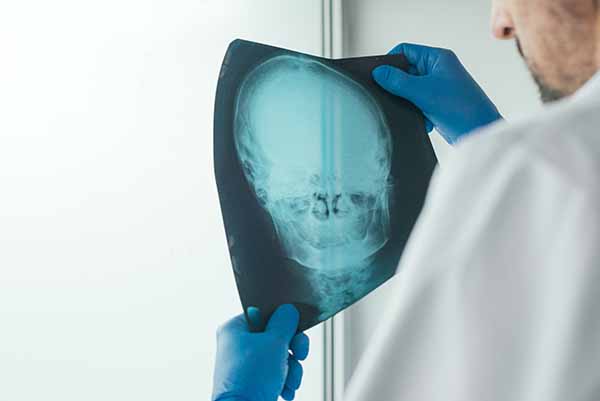
We know our bodies well enough to tell if something is wrong, especially after a facial fracture has occurred. Broken bones in the face are not always obvious, but they are painful, making it clear to seek medical treatment as soon as possible.
Process of Diagnosing a Facial Fracture
Getting an accurate diagnosis of a facial break is crucial to receiving the right treatment. Below are the steps of diagnosis that patients can expect to follow.
1. Check for any life-threatening issues.
In some cases, an injury is so severe that certain problems must be addressed before the medical professionals can begin treatment on any facial fractures. In this step, doctors and/or nurses will:
- Check for blockage in the airways or nasal passages
- Examine the pupil, looking for unusual sizes or reactions
- Assess the central nervous system for any present damage
2. Understand how the injury occurred.
At this point, the patient or caregiver should provide as much detail as possible about the incident that led to a facial fracture. Share about when and how it occurred, as well as past medical issues, injuries, or surgeries.
3. Evaluate the face.
During the examination, the medical personnel will check for:
- An asymmetrical appearance
- Issues with movement
- Abnormal bone shape and feel
4. Perform imaging.
In most cases, imaging is required for the doctor to continue with diagnosis and treatment. The most common testing needed are x-rays and CT scans. In more extreme instances, a patient will need to undergo reconstructive scans to help in the treatment process.
Treating a Facial Fracture
Treatment for a broken facial bone is trickier than it is for a broken arm or leg. Since casting is not involved, doctors must determine if the bone can be reset surgically or non-surgically. Either way, they will likely prescribe antibiotics in case of infection, as well as pain relievers and oral steroids to help with any swelling. The two main types of treatment for a facial fracture are:
- Closed reduction – the non-surgical reset of the bones
- Open reduction – the surgical reset of the bones, where the bones are repositioned via incision.
- Reconstruction – A more complex surgery for complex fractures that require reconstructive surgery.
All of these treatments hinge on factors like which bones are affected, where the break is on each bone, and how severe each break is.
Facial fractures are serious conditions. If you’ve suffered a recent break, don’t wait. Call Dr. Tomlinson immediately: 706-549-5033
Thank you for reading our series on facial fractures! If you missed any of our articles or would like to revisit one, please follow the links below:
- Part 1: Types and Symptoms of Facial Fractures
- Part 2: Causes and Prevention of Facial Fractures
- Part 3: Diagnosis and Treatment of Facial Fractures
